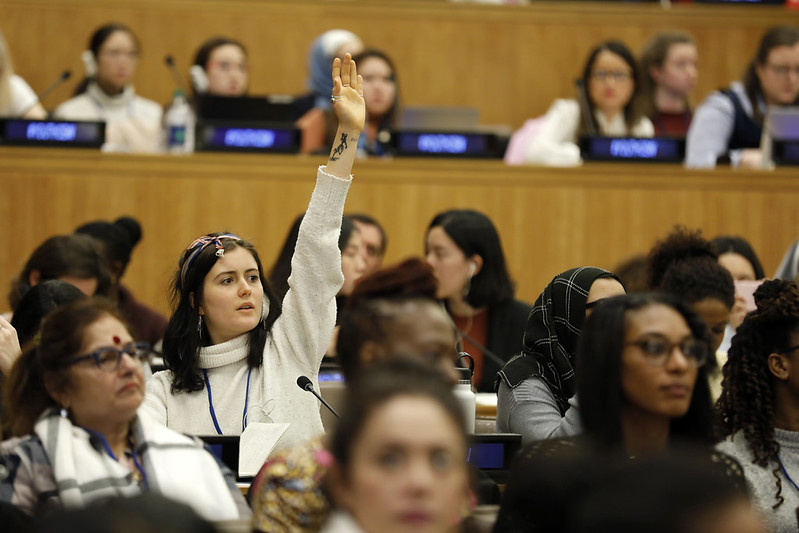When the Indian Captain Harmanpreet Kaur ran back and caught the final ball of the 2025 Women’s Cricket World Cup, a packed Navi Mumbai stadium erupted. Her teammates collapsed in celebration. It was India’s first women’s world title. This image isn’t just about sport, it signals something much broader. It marks a turning point in the global game of women’s sport, where excellence, representation and opportunity are being more widely shared.
In sport’s living memory, many of the greatest women’s world-sport titles have been won by nations long established in the game. Take women’s football: the United States has claimed four of the nine FIFA Women’s World Cups. In women’s cricket: up until this year, only Australia, England and New Zealand had ever lifted the One Day International (ODI) Women’s World Cup trophy. These patterns stemmed from early access to resources, strong domestic leagues, extensive media coverage and evolving gender-norms across the decades.
But now, a new map of sport is emerging. Consider: Japan’s women’s football team won in 2011, signalling Asia’s arrival; Morocco and Jamaica made knockout impact in the 2023 Women’s World Cup; in athletics, Kenya, Ethiopia and Jamaica dominate sprinting or distance events. And now India’s women’s cricket triumph in 2025.
What connects these disparate stories is not simply geography, but the spread of opportunity, the rise of ambition, and the growing narrative that talent can be globally distributed. India’s players came from small towns, regional academies and modest backgrounds, resources were not limitless, but their vision was. Their collective drive turned global attention to their game. Viewership of the tournament soared, with over 7 billion minutes of watch time recorded and tens of millions tuning in across broadcast and streaming platforms.
That shift matters, because when more women from more places win, the notion of who can belong at the top changes. Excellence is less a function of place and more a function of will.
Breaking Barriers, Building Dreams
The national and global context for this moment is deeply meaningful. According to the 2025 Global Gender Gap Index, India ranked 131st out of 148 countries, with only roughly 64 % gender parity between men and women. In India, female athletes received just 2.8 % of advertising airtime among women celebrities in some recent studies, despite their growing public presence. These hurdles are not unique to India. Women’s sport globally is still catching up, even in nations with advanced infrastructure and tradition. Pay gaps, media under-representation, and cultural stereotypes persist. But when a victory such as India’s happens, it does more than raise a trophy, it challenges the assumptions that out-of-reach talent exists only in certain pockets or that global sport is dominated by the same old players.
The catch by Harmanpreet Kaur, under pressure, symbolises more than a final wicket, it symbolises breakthrough. It symbolises a moment when the narrative shifts from “Can women from this region make it?” to “They already have made it.” It gives young girls everywhere a new reference point of aspiration. When that image is broadcasted, it changes what is possible in the minds of a generation.
And yet the structural work remains. To turn this triumph into sustained transformation requires investment in domestic leagues, full-time contracts for women athletes, media coverage that matches the moment, and a culture that supports women’s sport beyond one tournament. The win is the spark, but the flame must be nurtured.
Shared Wins, Shared Futures
From the perspective of international relations, sport is a strategic domain of influence, of identity, presence and ambition. Nations increasingly use major sport victories to project values. When India’s women’s cricket team clinched the World Cup, they did more than win a game, they projected a story of inclusion, of rising ambition, and of global belonging. That kind of soft power matters.
For Australia, which has one of the strongest women’s sport traditions and is a major player in the Indo-Pacific region, this moment offers a distinctive opportunity. Rather than viewing the win as a challenge or threat, Australia can choose to view itself as a partner in the next phase of sport’s evolution. Think of joint coaching programmes between Australian institutions and India’s women’s sport system, scholarship pathways, co-hosted tournaments or regional women’s sport diplomacy initiatives.
Such cooperation would reflect a more inclusive global order where sporting success is no longer siloed in a handful of nations but is shared, collaborative, and builds regional capacity. In this sense, the triumph is not only sport’s story, it is diplomacy, development and culture in motion. Australia’s place in this changing map is extended. becoming part of a network, not a monopoly.
This victory will not erase decades of inequality, but it can reshape imagination. The International Cricket Council’s record prize pool of US $13.88 million, almost triple that of 2022 and even larger than the men’s 2023 purse, shows how women’s sport is gaining real value. For a young girl in Mumbai, Nairobi, Kingston or Canberra, watching India lift the world title expands what feels possible and challenges old ideas about who can lead.
When Harmanpreet Kaur caught that final ball, she did more than secure a trophy. She captured a new image of women in global sport: confident, capable and commanding. The moment showed that excellence no longer belongs to a few power nations but to anyone with opportunity and belief. It reminded the world that women’s sport has come of age, visible, competitive and celebrated. This moment is about realising global potential. It is about women’s sport finding its rightful place in the world: inclusive, ambitious and international. The field is now ready for a century of change in women’s sport. For Australia, India and the many nations whose women athletes are now rising, the path is clear. Build on the momentum, move from breakthrough to baseline, and make sure the next victory is less a surprise and more an expectation.
Akshit Tyagi has worked full-time as a business and financial journalist in India for Republic TV, has worked part-time for The Canberra Times, and writes regularly for Australian Outlook and Independent Australia among others. Akshit Tyagi is a Master’s student of International Relations student at ANU, Canberra.
This article is published under a Creative Commons license and may be republished with attribution.





